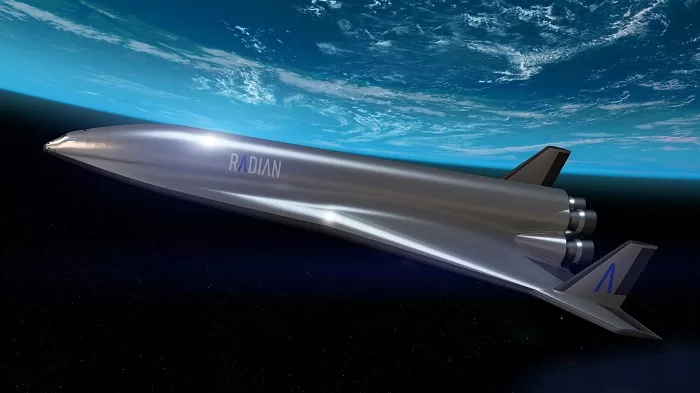Science & Environment
Reviving the Dream: Radian Aerospace’s New Approach to Single-Stage Space Travel

- NASA’s 1990s X-33 aimed to reduce space launch costs with a single-stage spacecraft but was canceled due to technical challenges.
- Radian Aerospace’s new space plane, Radian One, plans to use a rocket-powered sled for initial acceleration to achieve SSTO with improved technology.
- The Radian One will be reusable up to 100 times, with testing starting this year and full-scale flights projected for 2028.
NASA launched an ambitious project in the 1990s to develop the X-33, a low-cost spaceplane. The X-33 was designed with the Single Stage to Orbit (SSTO) idea in mind, aiming to ease space travel by eliminating the need for numerous rocket stages. Traditional rockets shed stages during ascent to minimize weight, but SSTO envisioned a totally reusable spacecraft that could launch vertically and land like a plane.
The goal was to significantly reduce the cost of launching payloads into orbit—from $10,000 per pound to $1,000. Despite the promise, the X-33 program was discontinued in 2001 due to technological difficulties that were insurmountable at the time.
Livingston Holder, the X-33 program manager and current CTO of Radian Aerospace, remarks on the project’s issues. Due to technology restrictions at the time, the project was “right on the edge” of what was doable. However, advances in materials and propulsion technology have altered the scene.
Radian Aerospace, which Holder co-founded in 2016, is aiming to actualize SSTO’s objective via a novel way. The company’s unique space plane, the Radian One, will launch from a sled propelled by rockets rather than vertically. This sled, which runs along a two-mile rail, will accelerate the spacecraft to Mach 0.7 (537 mph) before releasing it to continue its trip into orbit.
The problem of reaching orbit with a single stage is substantial. Traditional rockets must attain speeds of around 17,500 miles per hour and spend roughly 95% of their bulk on fuel, leaving little room for payloads. While SpaceX has made progress with reusable rocket stages, the Radian One intends to address these challenges by using a sled for initial acceleration, saving rocket fuel for the space plane’s route to orbit.
Radian’s design includes three major technologies: a sled launch mechanism that powers both the sled and the space plane, lightweight landing gear developed specifically for landing, and wings that provide lift while reducing propulsion requirements. This novel strategy is projected to make the Radian One reusable up to 100 times, with a 48-hour turnaround period between missions.
The Radian One will be capable of launching payloads such as satellites, undertaking Earth surveys, and assisting humanitarian missions in disaster-stricken locations where runways may be inaccessible. A scale model of the space plane will be tested this year, with full-size flight tests expected to begin in 2028.
Despite doubts regarding the practicality of SSTO, particularly in light of previous failures such as Britain’s Skylon project, Radian remains confident. The main issue will be to demonstrate not just technical success, but also that SSTO can compete economically with other launch systems, such as SpaceX’s Starship.
Radian Aerospace’s success could mark a crucial milestone in the drive for more efficient space travel, as the industry keenly monitors its efforts.
Source: CNN.


















































